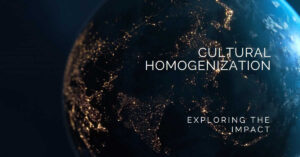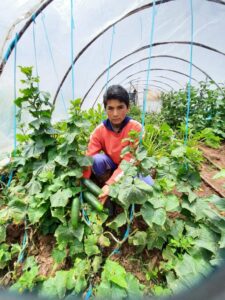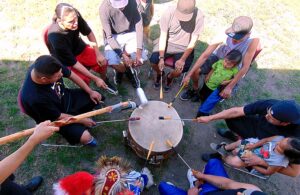In numerous remote regions, traditional healing practices play a crucial role in healthcare, often serving as the primary source of treatment for local communities.
This article examines the significance of traditional healing, emphasizing its importance in areas where access to modern medicine is limited.
It discusses the potential for collaboration between traditional healers and modern physicians, the challenges they encounter, and the advantages of their coexistence.
The focus lies on various traditional healing practices, the necessity of cultural sensitivity in healthcare, and the promising future of integrating these two approaches to enhance health outcomes.
This analysis aims to elucidate the vital connection between tradition and modernity in the pursuit of improved health in remote areas.
The Role of Traditional Healing in Remote Regions
.jpg_00.jpeg)
Traditional healing plays an essential role in the healthcare systems of remote regions, where access to modern medicine may be constrained by geographical, economic, or cultural factors. These practices are intricately woven into the cultural identity of these communities and frequently incorporate indigenous knowledge that has been transmitted through generations.
In such areas, traditional healing offers not only symptom management but also a holistic health approach to wellness that includes physical, mental, and spiritual well-being. This emphasizes the cultural significance of traditional methods in promoting overall health outcomes. The incorporation of traditional healing into community health initiatives can significantly enhance health outcomes and mitigate health disparities by fostering accessibility and cultural sensitivity in patient care.
What is Traditional Healing?
Traditional healing encompasses a variety of practices deeply rooted in cultural beliefs and local knowledge. These methods often employ herbal medicine, spiritual healing, and holistic approaches to enhance health and well-being, reflecting the ethnomedicine traditions and indigenous knowledge systems.
The traditions of healing differ significantly across cultures and regions, incorporating elements of ethnomedicine and natural remedies specifically tailored to address various health concerns.
In numerous communities, these practices transcend mere treatment; they represent a way of life intricately woven into daily routines and social interactions. For example, herbal medicine typically involves the gathering of local medicinal plants and the preparation of remedies that have been passed down through generations as part of local healthcare traditions.
Concurrently, spiritual practices may include rituals or communal gatherings designed to restore balance and harmony both within individuals and the broader community.
This interconnectedness highlights the significance of traditional healing in fostering a sense of identity and belonging, as well as promoting the overall health of the community through community engagement and respect for tradition.
As individuals increasingly seek alternatives or complementary methods to conventional medicine, traditional healing continues to play a crucial role, ensuring that cultural values and holistic perspectives remain fundamental to wellness practices worldwide.
Why is Traditional Healing Important in Remote Regions?
In remote regions, traditional healing constitutes a critical component of healthcare, especially in addressing health disparities and enhancing healthcare access for marginalized populations. The reliance on local healing practices fosters trust, improves patient-centered care, and promotes health equity within these communities.
These practices typically encompass herbal medicine, spiritual healing, and community-based rituals that align health interventions with cultural beliefs. For instance, in many indigenous communities, the integration of traditional healers into the formal healthcare system has not only improved patient outcomes but has also increased participation in health programs, demonstrating the potential for complementary therapies.
By acknowledging the importance of these ancestral knowledge systems, healthcare initiatives can more effectively address chronic illnesses and promote overall wellness. Traditional healing plays an essential role in community health initiatives by emphasizing preventive care and holistic well-being, ultimately bridging gaps in healthcare access and fostering resilience among marginalized populations.
The Coexistence of Traditional Healing and Modern Medicine
The coexistence of traditional healing and modern medicine presents a distinctive opportunity for healthcare innovation, especially in contexts where both systems can improve patient care.
This integration of practices facilitates a more holistic approach to health, merging evidence-based medicine with cultural competence to address the diverse needs of patients across various settings.
By promoting collaboration between healthcare providers, including traditional healers and modern physicians, it is possible to develop treatment options that honor local traditions while simultaneously advancing effective health outcomes and enabling patient-centered care.
How do Traditional Healers and Modern Doctors Work Together?
Traditional healers and modern medical practitioners frequently collaborate within healthcare settings to deliver comprehensive care, integrating their distinct skills and knowledge to improve patient outcomes. This collaboration can manifest in various ways, including referral systems, shared patient education initiatives, and the incorporation of complementary therapies that align with community preferences.
For example, in certain regions, modern physicians may refer patients to traditional healers for treatments that utilize herbal remedies or rituals, thereby facilitating a holistic approach to healthcare that honors cultural beliefs.
Community workshops can be organized to enable both traditional healers and modern doctors to share insights on best practices, thereby empowering patients to make informed decisions regarding their treatment plans, fostering patient empowerment and improving health literacy.
This collaborative effort not only fosters trust between patients and healthcare providers but also ensures that treatment decisions are inclusive and considerate of patient preferences, ultimately resulting in more effective and personalized care.
Challenges and Benefits of Coexistence
.jpg_01.jpeg)
The coexistence of traditional healing practices and modern medicine presents both challenges and advantages, as each system contributes its strengths and limitations to healthcare. While traditional healing methods may encounter skepticism from contemporary medical professionals, the integration of these approaches can significantly enhance community health by acknowledging cultural sensitivities and promoting a holistic perspective on wellness.
The differing philosophies underlying these two systems can pose considerable challenges; for instance, modern medicine emphasizes evidence-based practices, whereas traditional methods often rely on anecdotal experiences and centuries of accumulated wisdom. This divergence can result in misunderstandings and a lack of trust among practitioners.
Nevertheless, when both healing modalities are effectively harmonized, they can lead to improved patient care and better health outcomes. Patients may discover that the complementary aspects of both systems provide more comprehensive treatment options, enabling tailored care that respects individual beliefs while simultaneously adhering to established medical guidelines, reflecting the principles of medical pluralism.
Examples of Traditional Healing Practices in Remote Regions
Traditional healing practices in remote regions exhibit a remarkable diversity and are frequently deeply embedded in the local culture.
These methods encompass a wide range of approaches, including herbal medicine, acupuncture, and massage therapy, and reflect the integration of alternative medicine practices such as ayurveda and homeopathy. Such practices not only provide essential healthcare solutions but also embody the intricate tapestry of indigenous knowledge and local beliefs that influence community health and wellness.
Herbal Medicine
Herbal medicine serves as a fundamental aspect of traditional healing, employing various medicinal plants and natural remedies to address ailments and promote overall wellness, embodying the principles of folk medicine and alternative therapies. This practice is grounded in extensive ethnobotanical knowledge, with practitioners often possessing a profound understanding of local flora and their medicinal properties.
The application of these herbs encompasses a wide range of health issues, with notable examples including:
- echinacea to enhance immunity,
- ginger to support digestive health,
- turmeric for its anti-inflammatory properties.
These herbal remedies not only provide alternatives or complements to conventional treatments but also emphasize the importance of a holistic approach to health, addressing not just symptoms but the individual as a whole.
Integrating herbal medicine into patient care facilitates a more personalized healing experience, fostering a deeper connection between the practitioner and the patient, while also enhancing the overall efficacy of treatment plans.
Acupuncture
Acupuncture, a traditional healing practice that originated in ancient China, involves the insertion of thin needles into specific points on the body to alleviate chronic pain and promote overall wellness. It demonstrates the integration of traditional vs. modern approaches in health systems. This practice has garnered recognition within various healthcare systems due to its effectiveness in chronic pain management and its integration into comprehensive wellness programs.
While acupuncture primarily aims to balance the body’s energy, referred to as Qi, it also addresses a range of ailments, including chronic pain conditions, stress reduction, and overall health improvement. By understanding the intricate connections between the body’s systems, this therapeutic modality can enhance the efficacy of modern medicine.
Incorporating acupuncture into contemporary healthcare practices provides a holistic approach that not only manages pain but also fosters mental clarity and emotional well-being. Patients frequently report that the integration of this ancient technique and other complementary therapies can lead to improved treatment outcomes, a decreased reliance on pharmaceuticals, and an overall enhancement in their quality of life.
Massage Therapy and Complementary Therapies
Massage therapy represents a significant component of traditional healing practices, widely recognized for its therapeutic benefits in managing physical ailments and enhancing mental health. This hands-on approach not only alleviates symptoms but also promotes overall physical well-being through relaxation and stress reduction. Additionally, it is an integral part of holistic health practices that consider the whole person, including physical, emotional, and spiritual well-being.
Various modalities of massage therapy, such as Swedish, deep tissue, and Shiatsu, each provide unique techniques and benefits tailored to meet individual needs.
- For example, Swedish massage is well-regarded for its ability to enhance circulation and relieve muscle tension.
- Deep tissue therapy specifically targets chronic pain and muscle knots through the application of intense pressure.
- Shiatsu, which is rooted in Japanese tradition, focuses on balancing energy flow, thereby contributing to emotional stability.
The holistic nature of these therapies enables practitioners to address both physical and emotional challenges that impede overall wellness. This highlights the importance of incorporating massage into regular self-care routines to foster a healthier mind and body.
The Importance of Cultural Sensitivity in Healthcare and Indigenous Practices
.jpg_10.jpeg)
Cultural sensitivity in healthcare is essential for establishing trust between patients and providers, especially in contexts where traditional healing practices and indigenous knowledge are significant.
A comprehensive understanding and respect for these practices can strengthen the patient-provider relationship, ultimately resulting in improved health outcomes and the success of community health initiatives. Embracing the cultural significance of these practices fosters patient trust and engagement.
Understanding and Respecting Traditional Healing Practices and Indigenous Knowledge
Understanding and respecting traditional healing practices is crucial for healthcare professionals operating in diverse environments, as this knowledge promotes cultural competence and enhances the quality of patient care. By acknowledging the significance of these practices including folk medicine, providers can engage more effectively with patients and their communities.
This engagement not only fosters trust but also facilitates a more holistic approach to treatment. In the realm of healthcare education, incorporating traditional healing techniques such as herbal remedies and spiritual healing into curricula can significantly enrich the learning experience for future healthcare providers.
Practical strategies such as:
- Collaborating with traditional healers,
- Attending community health events that celebrate cultural diversity,
- Including discussions on the efficacy of traditional remedies in clinical training
can significantly enhance a practitioner’s professional toolkit. Ultimately, this integration results in improved health outcomes by ensuring that patient care is respectful, inclusive, and tailored to individual cultural needs.
Collaborating with Traditional Healers to Improve Healthcare Access in Remote Regions
Collaborating with traditional healers presents a unique opportunity to enhance healthcare in remote regions, where their knowledge and established trust within the community can significantly improve healthcare access and patient outcomes. This form of medical pluralism respects both traditional and modern healing modalities.
By fostering partnerships between traditional healers and modern medical professionals, communities can benefit from a more comprehensive approach to health. This collaboration addresses healthcare disparities by integrating diverse treatment options.
Such collaborations can effectively address gaps in service delivery by combining the cultural competence of traditional practices with the clinical expertise of healthcare providers. This synergy can enhance patient-centered care and improve treatment adherence.
For instance, in various regions of Africa, programs have successfully integrated traditional healers into formal health systems, leading to improved maternal health outcomes. A notable case study highlighted a community initiative wherein traditional birth attendants worked in conjunction with midwives, resulting in decreased maternal mortality rates and increased healthcare engagement among pregnant women.
These examples demonstrate that leveraging the strengths of both healing modalities creates a synergistic effect, ultimately enhancing the overall well-being of the community.
The Future of Traditional Healing and Modern Medicine in Remote Regions
The future of traditional healing and modern medicine in remote regions hinges on the potential for increased integration and collaboration. This collaboration can facilitate innovative healthcare solutions that honor and incorporate local traditions and practices.
As health education and community resilience continue to evolve, practitioners have the opportunity to leverage the strengths of both systems, thereby enhancing patient care and improving overall health outcomes.
Promoting Integration and Collaboration for Better Healthcare and Wellness Practices
Promoting the integration and collaboration between traditional healing practices and modern medicine is essential for the advancement of healthcare practices that are responsive to the needs of various communities. By advocating for supportive healthcare policies and fostering community engagement, stakeholders can establish environments where both systems can flourish, thereby enhancing patient care. Such integration supports alternative medicine approaches and respects patient preferences.
Such initiatives facilitate ongoing dialogue between practitioners of both disciplines, resulting in a comprehensive approach that addresses all dimensions of health. Effective policies can support training programs designed to educate modern healthcare providers about traditional practices, including the use of medicinal plants, while also creating platforms for traditional healers to share their expertise within clinical environments.
For example, certain healthcare systems have successfully implemented culturally competent care models that respect and incorporate traditional healing methods, leading to improved patient engagement and satisfaction. These collaborative efforts not only enhance individual health outcomes but also fortify community resilience, ultimately establishing sustainable healthcare systems that effectively serve diverse populations.
The Potential Impact of Traditional Healing on Modern Medicine
.jpg_11.jpeg)
The potential impact of traditional healing on modern medicine is considerable, providing valuable insights into holistic approaches that emphasize patient-centered care and wellness programs. By integrating elements of traditional healing, such as ethnomedicine and trauma healing, into evidence-based practices, healthcare providers can improve health outcomes and develop more inclusive care models.
This integration promotes a comprehensive understanding of patient health, taking into account not only physical symptoms but also emotional and spiritual well-being. Healthcare professionals can benefit from traditional practices, such as herbal remedies, folk medicine, and community-based support, which often highlight the significance of personal history and cultural context in the healing process.
By respecting these traditions while rigorously evaluating their effectiveness, it is possible to create innovative treatments that resonate with diverse populations. Drawing from a wide array of healing methods, including homeopathy and ayurveda, can give the power to patients, encouraging them to become active participants in their health journey and ultimately fostering a more holistic approach to wellness.
Frequently Asked Questions on Traditional Healing and Modern Medicine Integration
What is traditional healing and how does it coexist with modern medicine in remote regions?
Traditional healing refers to a range of practices and beliefs that are used to promote health and well-being. It often involves the use of natural remedies, rituals, and spiritual elements. In remote regions, traditional healing can coexist with modern medicine as it is often the only available form of healthcare for many communities. This coexistence exemplifies medical anthropology and the blending of healthcare models.
Why is traditional healing still practiced in remote regions despite the availability of modern medicine?
Traditional healing is deeply rooted in the cultural and spiritual beliefs of many remote communities. It also provides a sense of identity and community for these groups. Additionally, modern medicine may not always be accessible or affordable in these regions, making traditional healing the only viable option for healthcare. Consequently, integrating traditional and modern systems can help bridge healthcare disparities and improve access to care.
How do traditional healers and modern medical professionals work together in remote regions?
In many cases, traditional healers and modern medical professionals collaborate and work together to provide comprehensive healthcare for communities in remote regions. Traditional healers may refer patients to modern medical facilities for more serious conditions, while modern medical professionals may seek the expertise of traditional healers for certain cultural or spiritual aspects of healthcare. This collaboration enhances patient care through a system of care that respects local healthcare traditions.
What challenges can arise when traditional healing and modern medicine coexist in remote regions?
One challenge is the potential clash of beliefs and practices between traditional healing and modern medicine. This can lead to mistrust and misunderstanding between the two systems, making it difficult for them to work together. Additionally, there may be a lack of regulation and standardization in traditional healing, which can pose risks to patients. Overcoming these integration challenges requires strong health communication and respect for tradition to foster collaboration.
How does the integration of traditional healing and modern medicine benefit remote regions and address healthcare disparities?
The integration of traditional healing and modern medicine can lead to a more holistic approach to healthcare in remote regions. It also includes complementary therapies that improve healthcare access for underserved communities and promote cultural preservation. By working together, traditional healing and modern medicine, along with alternative medicine, can provide a more comprehensive healthcare solution that respects indigenous practices and local traditions.
Are there any successful examples of traditional healing and modern medicine coexisting in remote regions?
Yes, there are many successful examples of traditional healing and modern medicine coexisting in remote regions. For instance, the integration of traditional Chinese medicine, including acupuncture and herbal remedies, and Western medicine in rural areas of China has proven to be effective in providing healthcare for communities. In Africa, the incorporation of traditional healers into HIV/AIDS treatment programs has also been successful in improving health outcomes. These examples highlight the importance of cultural significance, trust in medicine, and community health in achieving better health outcomes.

My name is Bruno, I have been a writer for 5 years and I work with website creation. My goal is to provide true information to readers. In fact, on this site I write about cultures and traditions, which I have been passionate about since childhood.




